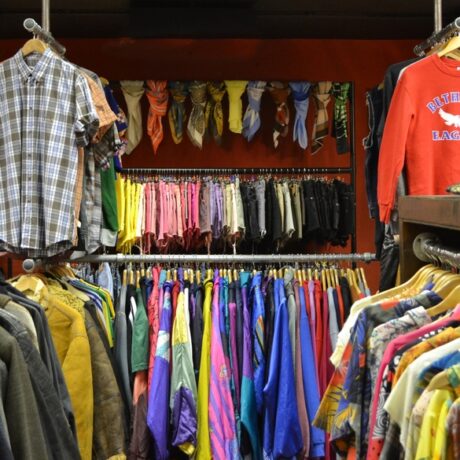The world in our wardrobe
Working on the communications for this campaign, I have been amazed by Fashion Revolution Day’s global reach. Emails have poured in from across the world, full of diversity and support – a connection of committed voices across an often-unseen network
I should not be surprised by the global nature of these stories, though, I could find them simply by opening my wardrobe: A quick count reveals seven garments made in China, two in India, Portugal and Turkey, and one each from Spain, Indonesia, and Morocco. Four have no country of origin label at all. Quite a well-travelled shelf.
But these labels tell only a fraction of the stories of my clothes – the country of manufacture, usually final assembly. Where did the fibres come from? The threads and the components? What about the dyes, chemicals and treatments? I’ll take two staple examples: a cotton dress and a wool jumper
The cotton dress from Topshop – one of my favourites – was made in Mauritius. But the cotton probably didn’t come from there. Most likely it’s from the large producing nations like China, India or Uzbekistan, grown by one of the 100 million farmers whose livelihoods are supported by the crop. But I can’t tell this from looking at it. Nor can I tell whether insecticides were used on the plants (despite knowing that 16% of all insecticides are used by the cotton industry), or whether the farmer had the right protective clothing? And what of the ginners, spinners, weavers and dyers whose hands it passed through before it reached the machinist in Mauritius?
Merino wool jumper, John Lewis, made in the UK – you’d expect this one’s from a little closer to home as part of a growing trend to manufacture within the UK. However, the merino wool, prized for its wonderful softness, and anti-bacterial properties is not a home-reared wool but one more likely to be found in New Zealand. From it’s small label I cannot know how the animals were cared for, or which chemicals were used in dyeing.
Fashion Revolution Day has made me reflect on my wardrobe, and the many miles, processes and hands involved in making it-the thread all the way from the farmer to the consumer. Being curious and finding out more may seem like simple steps, but they open up a whole world that we carry with us everywhere we go.






